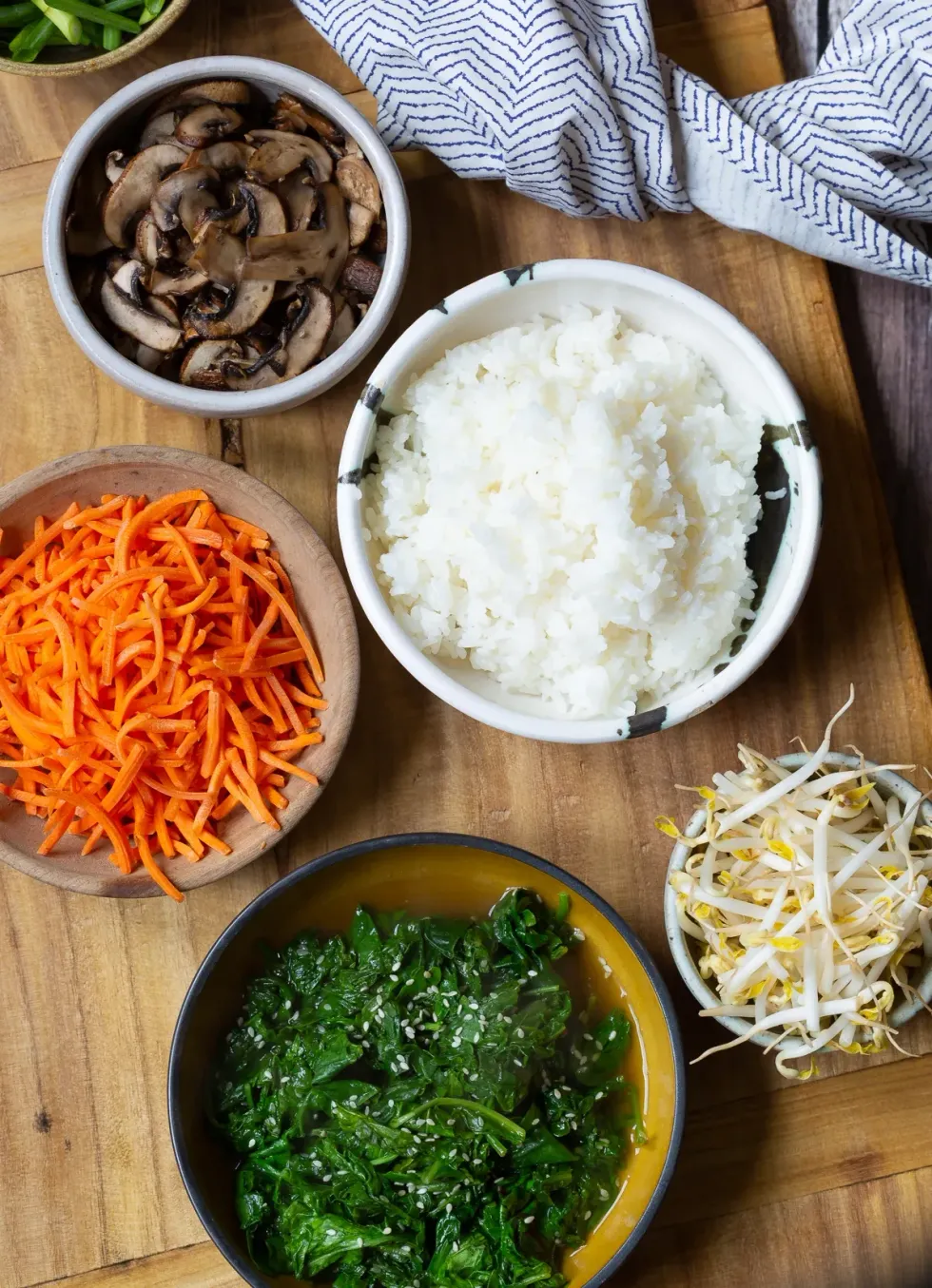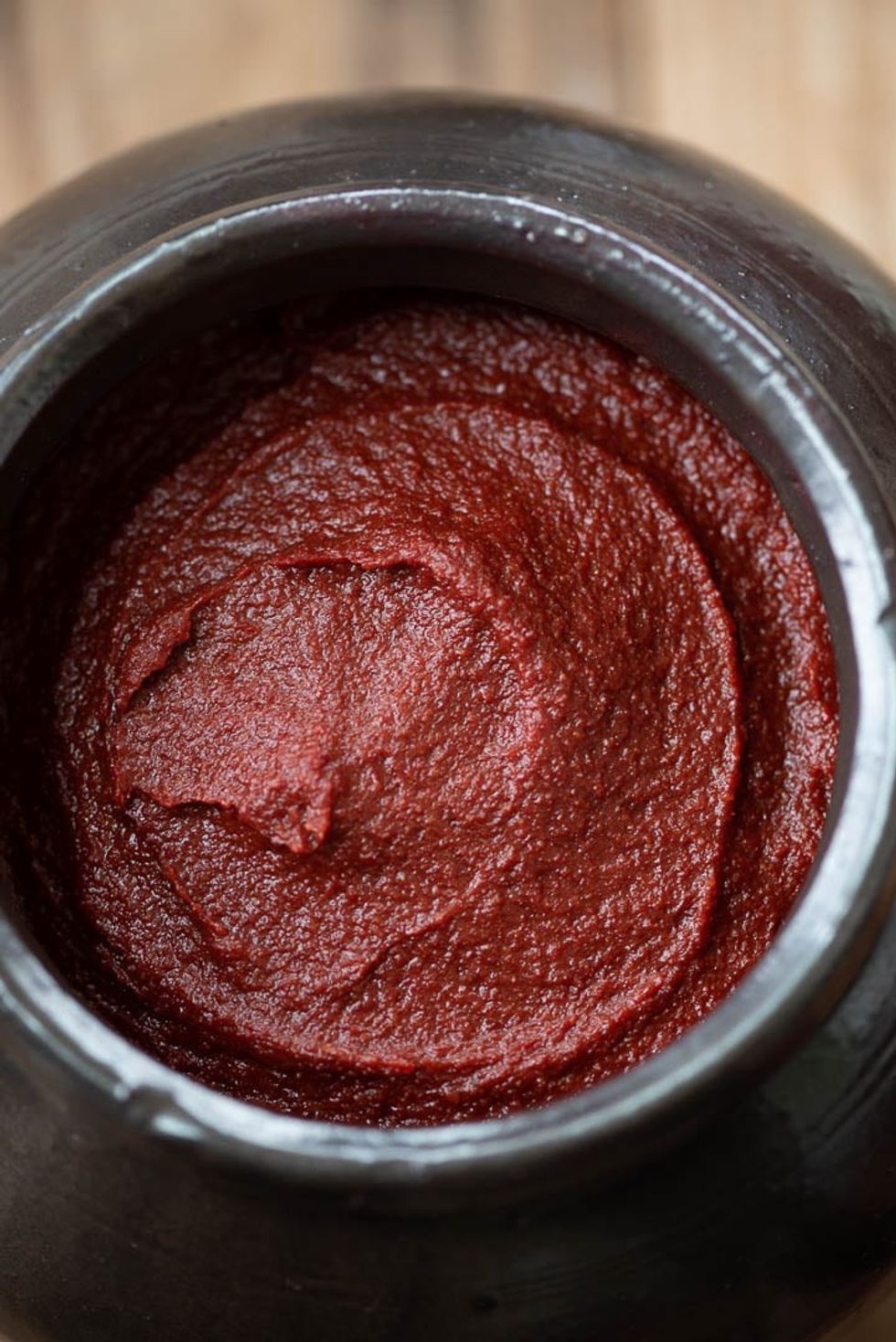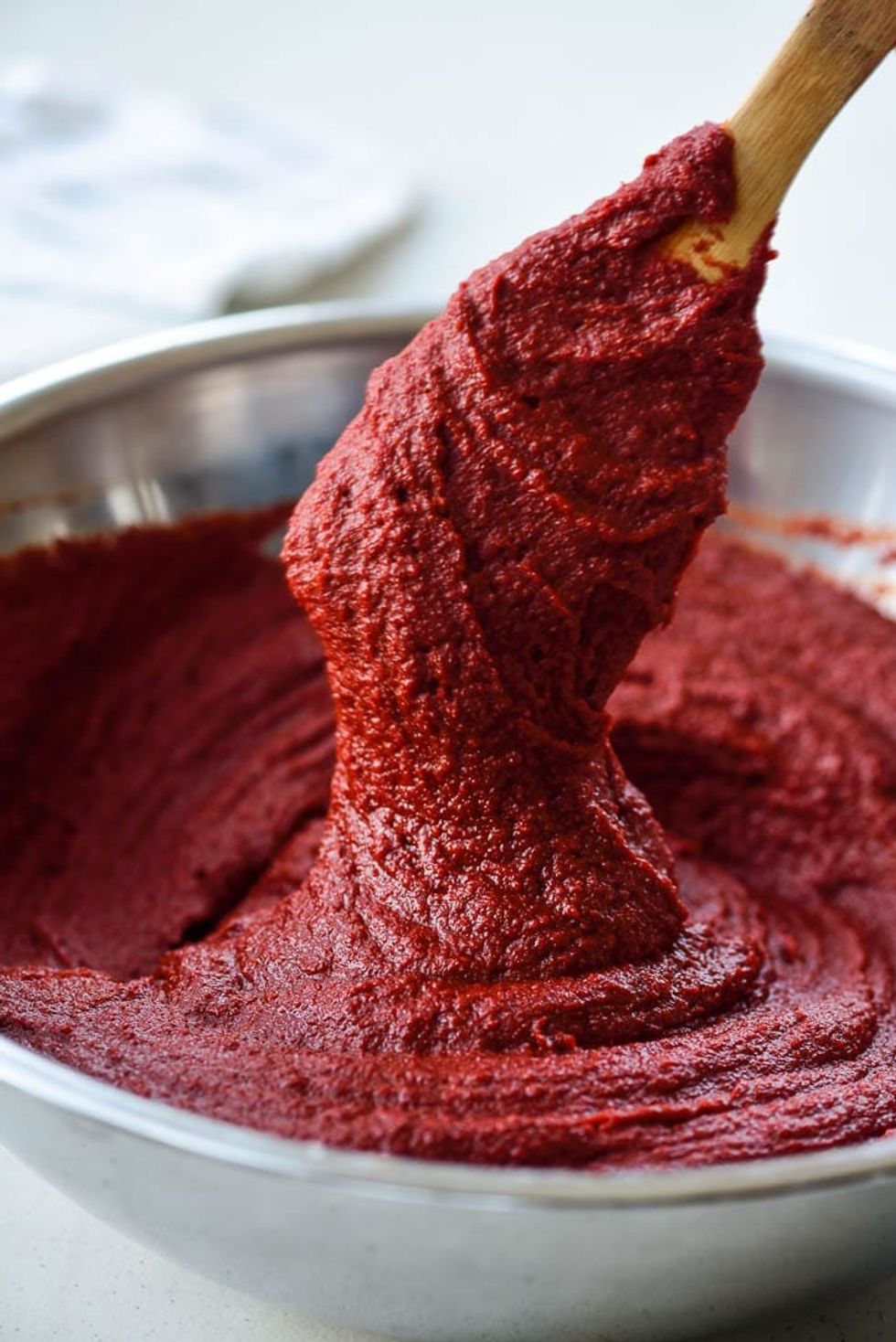Indulge your senses with this authentic Korean recipe.
Experience The Taste of Seoul With This Incredible Bibimbap Recipe

Content writer and savvy strategist in digital marketing. Beyond the world of words, Anja also finds inspiration in traveling and any form of art which infuses her work with creativity, enthusiasm, and a touch of wanderlust. Some of her favorite pastimes are sleeping on the grass, drawing, and training kickbox.
Bibimbap, a beloved Korean dish, is a vibrant and flavorful culinary masterpiece that captures the essence of Korean cuisine in a single bowl. Translating to "mixed rice," Bibimbap is a harmonious medley of fresh vegetables, marinated meat, a perfectly fried egg, and a fiery gochujang sauce, all served over a bed of steamed rice. This iconic dish not only tantalizes the taste buds with its bold and diverse flavors but also enchants the eyes with its colorful presentation.
Its origins can be traced back to the Joseon Dynasty in Korea, where it was traditionally enjoyed as a means of using up leftover ingredients. Today, it has evolved into a beloved staple of Korean cuisine, both at home and abroad. With its wide variety of ingredients and customizable nature, Bibimbap allows for endless creativity, making it a versatile dish that can be tailored to individual preferences.
The process of selecting the freshest ingredients, chopping and arranging them with care, and crafting the perfect gochujang sauce fills my kitchen with a sense of excitement and anticipation. It is a labor of love, a culinary expression of my admiration for Korean culture and my desire to bring the authentic flavors of Bibimbap into my own home. A Spicy Perspective’s Korean Bibimbap is the perfect recipe if you're looking to try this classic Korean dish. Here's how to make it!
Ingredients For Korean Bibimbap:

Image via A Spicy Perspective
For the Korean Bibimbap:
- 3 cups cooked sticky rice 1 1/4 cups dry rice
- 8 ounces loose leaf spinach or chopped kale
- 8 ounces sliced mushrooms oyster, shiitake, or cremini
- 1 cup shredded carrots
- 1 cup mung bean sprouts
- 1 bunch green onions cut into 1-inch segments
- 2 teaspoons sesame oil
- 1/4 cup vegetable broth
- 1 clove garlic minced
- 1 teaspoon sesame seeds
- 4 eggs
- Beef Bulgogi Recipe for non-vegetarian
- Salt and pepper
For the Gochujang Sauce:
- 1/2 cup Korean gochujang paste found at Asian markets or Whole Foods
- 2 tablespoons sesame oil
- 2 tablespoons honey
- 1 teaspoon rice vinegar
- 2 teaspoons sesame seeds
Instructions For Korean Bibimbap:
- Begin by cooking the rice according to the instructions on the package. While the rice is cooking, it's a good time to prepare your vegetables.
- In a pot, combine spinach or kale with sesame oil, some vegetable broth, sesame seeds, salt, and pepper. Simmer for a few minutes.
- In a large skillet, sauté sliced mushrooms and garlic in sesame oil over medium-high heat. Once cooked, transfer them to a bowl and cover to keep warm.
- Prepare the Gochujang sauce by whisking all the ingredients together in a small bowl. Set it aside until you're ready to serve.
- After wiping the skillet clean, fry the eggs in sesame oil, ensuring the centers remain soft, for about 1-2 minutes on each side.
If you're looking to elevate your culinary prowess and showcase your skills as a true kitchen magician, read on to see how to make Gochujang from scratch instead of using a store-bought version. By mastering the art of making this iconic Korean chili paste at home, you'll not only unlock a world of complex flavors but also gain a profound sense of satisfaction and accomplishment.
What is gochujang?

Image via Korean Bapsang
Gochujang, an essential element in Korean cuisine, is a rich and fiery red paste crafted from a combination of red chili pepper flakes, sticky rice (also known as glutinous rice), fermented soybeans, and salt. In traditional preparations, it undergoes a lengthy fermentation process in outdoor earthenware pots, allowing the starches in the sticky rice to convert into sugars, resulting in a distinctive sweetness. The presence of chili peppers imparts a satisfying level of lingering spiciness, while the fermented soybeans contribute a miso-like component that forms the foundation of gochujang's savory "umami" taste. As it is very concentrated, it’s typically used to add depth to dishes in collaboration with other ingredients, rather than as a standalone condiment. Gochujang is very versatile, and I add it to different dishes so it’s well worth making it yourself and this recipe from Korean Bapsang is one of my favorite ones.
Ingredients For Homemade Gochujang:
- 250 grams meju garu, fermen500 grams yeotgireum, barley malt
- 500 grams wet chapssal garu - sweet rice flour or 2 cups sweet rice soaked and blended
- ted soybean powder
- 250 grams Korean Cheonilyeom, coarse sea salt
- 500 grams finely ground gochugaru
- 1 cup jocheong, rice syrup - optional or masilcheong (Korean green plump syrup)
Instructions For Homemade Gochujang:

Image via Korean Bapsang
- Begin by placing the barley malt in a large bowl. Add 10 cups of warm water and let it sit for an hour or longer, until overnight.
- Rub the malt between your palms and squeeze out the milky liquid. Strain the malt liquid through a fine sieve or line a strainer with cheesecloth if needed. Squeeze the malt husks through the sieve to drain any remaining liquid. Transfer the liquid to a large heavy-bottomed pot.
- Place the malt husks in the first bowl and add another 10 cups of water without additional soaking time. Repeat the squeezing and straining process, then transfer the liquid to the pot with the first batch of milky liquid. This should yield about 17 to 18 cups of malt water.
- Stir in sweet rice powder to the malt water and warm it up without making it too hot to touch. Let it sit for two hours, allowing the enzymes in the malt to break down the starch in the sweet rice and convert it to sugar.
- Turn the heat to medium and boil the liquid until it reduces to half the original amount, stirring occasionally. Measure the depth of the liquid to gauge when it reaches half. This process takes about 2 hours, resulting in approximately 8 to 9 cups of liquid. You'll need about 8 cups for the recipe, but having a bit extra is helpful. If using optional liquid, you can reduce it further. Stir occasionally and let it cool down.
- While the liquid is still warm, pour 7 cups of malt liquid into a large bowl and add the salt. Stir to dissolve.
- Use a whisk to incorporate the fermented soybean powder until no lumps remain.
- Add the gochugaru and mix thoroughly until there are no large lumps. Stir with a large wooden spoon or spatula. If the gochujang is too thick, adjust the thickness and sweetness by adding more malt liquid or optional ingredients like rice syrup, plum extract, or soju. The consistency should allow the gochujang to slowly drop from the spoon or spatula like a thick batter. Let it sit for a few hours until the dry ingredients fully absorb the liquid and the salt is completely dissolved. Adjust the saltiness, sweetness, and thickness to your liking. Note that gochujang should be slightly too salty to eat as is.
- Transfer the mixture to a jar or an earthenware container, such as an onggi hangari if available. Sprinkle lightly with coarse sea salt and cover with a fine mesh fabric or cheesecloth secured with a rubber band.
- Place the lid on the container and keep it outdoors in cool temperatures or at room temperature next to a sunny window, removing the lid on sunny days to allow some exposure to sunlight. This small batch will take 60 to 90 days to ferment. After that, you can refrigerate it.
Share your Bibimbap results with us @BritandCo.
Photo by Nikolay Sweh / Unsplash.



















